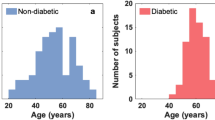Abstract
In this paper, diabetic measure via non-invasive technique form the peripheral edema is proposed. The peripheral edema arises in the diabetic person in the ankle with thick skin formation in the joints with stiffness and change in skin tone. However, the existing clinical systems measure the circumstance or size of the edema and the flow rate of the fluid. The blood circulation is still a challenge in the assessment of the edema. The proposed method identifies the fluid and the blood circulation in the edema and predicts the diabetic value through the rectangular zig fractional (RZF) antenna. The RZF antenna laid over the edema surface and figure pressure applied over the antenna. RZF antenna sensor acquires electromagnetic radiation of fluid. The antenna works as a radiometer and measures the voltage according to the circulation of the fluid or blood, and tabulated for the diabetic value measurement. From the dataset of 50 people with edema shows the relation between the skin blood flow and edema. Furthermore, the diabetic value from the edema show an accuracy of about 85%, when compare with the laboratory value.

(IFAC 2011)

(IFAC 2011)

(IFAC 2011)







Similar content being viewed by others
References
Yale, S. H., & Mazza, J. J. (2001). Approach to diagnosing lower extremity edema. Comprehensive Therapy, 27, 242–252.
Mudaliar, S., & Chang, A. R. (2003). Thiazolidinediones, peripheral edema, and type 2 diabetes: Incidence, pathophysiology, and clinical implications. Endocrine Practice, 9, 406–416.
Messerli, F. H. (2001). Vasodilatory edema: A common side effect of antihypertensive therapy. National Institutes of Health, 1, 978–979.
Messerli, F. H. (2002). Calcium antagonists in hypertension: From hemodynamics to outcomes. National Institutes of Health, 2, 94–97.
Seidel, H. M., Ball, J. W., Dains, J. E., & Benedict, G. W. (1995). Heart and blood vessels. In S. Schrefer (Ed.), Mosby's guide to physical examination (3rd ed., p. 419). St. Louis, MO: Mosby.
Brodovicz, K. G., Mcnaughton, K., & Uemura, N. (2009). Reliability and feasibility of methods to quantitatively assess peripheral edema kimberly. Clinical Medicine & Research, 7, 21–31.
Adamo, L., & Thoelke, M. (2012). Generalised insulin oedema after intensification of treatment with insulin analogues. BMJ Case Reports. https://doi.org/10.1136/bcr-2012-007037.
Report, C., et al. (2010). Insulin oedema in newly diagnosed type 1 diabetes mellitus. Journal of Clinical Research in Pediatric Endocrinology, 2(1), 46–48.
Bulus, A. D., Andiran, N., & Köksal, A. O. (2016). Insulin edema in type 1 diabetes mellitus: Report of a case and brief review of the literature. Iranian Journal of Pediatrics, 26, 1–11. https://doi.org/10.1109/jbhi.2016.2544961.
Imran, M., Brown, K., Maz, M., & Iii, J. M. (2015). Diabetic myonecrosis of bilateral thighs in newly diagnosed type 2 diabetes mellitus. Kansas Journal of Medicine, 1, 1–6.
Arima, E., Naitoh, Y., Hohenau, A., & Krenn, J. R. (2015). Patch antenna for measuring the internal temperature of biological objects using the near- field microwave radiometric method patch antenna for measuring the internal temperature of biological objects using the near-field microwave radiometric method. Journal of Physics: Conference Series, 671, 1–6.
Klemetsen, Ø., Birkelund, Y., Jacovsen, S. K., Maccarini, P. F., & Stauffer, P. R. (2012). Design of medical radiometer front-end for improved performance. Progress in Elecromagnetics Research B. Pier, 3, 289–306.
Klemetsen, Ø. (2011). Design and evaluation of a medical microwave radiometer for observing temperature gradients subcutaneously in the human body. 1–92.
Ubaichin, A., Bespalko, A., Filatov, A., Alexeev, E., & Zhuk, G. (2016). Patch antenna for measuring the internal temperature of biological objects using the near-field microwave radiometric method. Journal of Physics: Conference Series, 671(1). https://doi.org/10.1088/1742-6596/671/1/012006.
Zhang, J., Tian, G. Y., Marindra, A., Sunny, A. I., & Zhao, A. B. (2017). A review of passive RFID tag antenna-based sensors and systems for structural health monitoring applications. Sensors, 17, 265. https://doi.org/10.3390/s17020265.
Boland, J. J. (2010). Within touch of artificial skin. Nature Publishing Group, 9, 790–792.
Urn, D., & Lumelsky, V. (1999). Fault tolerance via analytic redundancy for a modularized sensitive skin. In Proceedings of the 1999 IEEE/RSJ international conference on intelligent robots and systems (Vol. 3, pp. 1191–1197).
Engel, J., Chen, J., & Liu, C. (2003). Development of polyimide flexible tactile sensor skin. Journal of Micromechanics and Microengineering, 13(3), 359–366. https://doi.org/10.1088/0960-1317/13/3/302.
Liu, R. H., Wang, L., Beebe, D. J., & Avenue, N. M. (1998). Progress towards a smart skin: Fabrication and preliminary testing. In Proceedings of the 20th annual international conference IEEE engineering in medicine and biological society (Vol. 20, pp. 1841–1844).
Kim, D., et al. (2012). Thin, flexible sensors and actuators as ‘instrumented’ surgical sutures for targeted wound monitoring and therapy. Small, 8, 3263–3268. https://doi.org/10.1002/smll.201200933.
Axisa, F., et al. (2005). Flexible technologies and smart clothing for citizen medicine, home healthcare, and disease prevention. IEEE Transactions on Information Technology in Biomedicine, 9, 325–336.
Xu, Y., et al. (2003). Flexible shear-stress sensor skin and its application to unmanned aerial vehicles. Sensors and Actuators, A: Physical, 105, 321–329.
Author information
Authors and Affiliations
Corresponding author
Rights and permissions
About this article
Cite this article
Ramesh, G.P., Mohan Kumar, N. Radiometric Analysis of Ankle Edema via RZF Antenna for Biomedical Applications. Wireless Pers Commun 102, 1785–1798 (2018). https://doi.org/10.1007/s11277-017-5236-6
Published:
Issue Date:
DOI: https://doi.org/10.1007/s11277-017-5236-6




